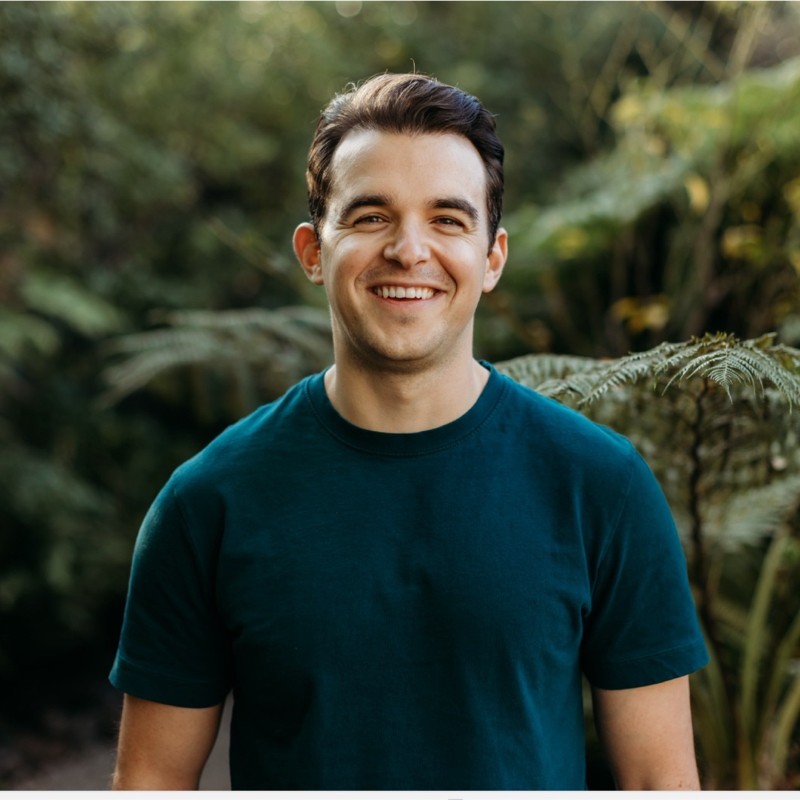This article is part of our 2021 Q1 spotlight series on working with strategic integrators and agencies. Read more about this series in our intro article.
This week, Sarah Jackson joins us to discuss her experience partnering with SIs and digital agencies, advice for others in the industry, and how her sales background contributes to her success.
This spotlight series is brought to you in partnership with PartnerStack.
Meet Sarah

Sarah Jackson joined Contentsquare as a Senior Solutions Partner just after Thanksgiving. She has over 20 years of experience in direct sales, sales leadership, and partnerships. Sarah brings a sales-geared perspective to partnerships.
Sarah decided to move from sales because she missed dealing with “human” accounts independently and felt she could make a more significant impact on the partner side. Right now, Sarah works with two large partners: Deloitte and Accenture. They both operate in the user experience, customer experience, and analytics space. She has found a lot of synergies working with Deloitte.
Initiating a Partner Program
If you’re looking to start a partner program for the first time, Sarah shared that it’s not crucial to have a polished plan from the onset. “You don’t have to have a fully cooked program, but you do need to have some type of internal support. From a sales standpoint, you need a success team. Once you land a partner, you need to have those next steps for retaining them.”
Contentsquare’s partner program was built from the ground up. “Start small. If you can even start local, that’s ideal. If you can build a high touchpoint relationship, you know they’re going to give you feedback. Don’t start with a Deloitte to test out your program. You’re not going to have that first chance again.”
Having the patience to test strategies out is critical. Sarah shared that being part of Partnership Leaders has been especially helpful for growing her program. “You have to identify your best partners. What are you trying to accomplish with them? Augment services? Source business to grow? You need a conceptual idea. Start small and grow up.”
Identifying Partner Opportunities
Like others we spoke with, Sarah shared that looking for overlap in clients can be a great way to identify new partners. “From our perspective, we have a big focus on technology integrations and APIs. It’s a good place to look when you have mutual clients, customers, prospects, and technology. Mutual customers and prospects are huge as they add a sense of urgency that isn’t usually there.”
Sarah recommends finding a niche for your technology. “Find your lane from a technology perspective, then go to an aligned SI to develop a collaborative offering.”
The Difference Between SIs & Large Agencies
In Sarah’s experience, the difference between SIs and large agencies is multi-faceted. “You can get some strong champions that know what you’re doing, but just because you sell the leadership aspects of it, you still have to figure out how to package it and ultimately sell to the partners selling the accounts.”
She figured out that it’s best to start by identifying that initial shared customer or prospect you can pitch on and package your customer use-case. “Many of these partners want to be low-risk. You have to find the right opportunity where the timing is right, the priorities align, leadership is sold, and it’s packaged in a way to make it risk-averse.”
The timeline for activation is another key difference Sarah pointed out. “Even the largest digital agencies are much more agile. It’s an incredibly competitive market, and the need to differentiate and bring in new solutions is significant. If you can get a champion at an agency, especially a large agency, you can get a lot more motivation faster.”
Past that, “Everything is driven by finding the right account to work on together. Once you find that need, it could be six months, twelve months. From my perspective, go after the SIs but also have an equal focus on smaller agency partners. They still have large logos and opportunities, but it’s harder to nail down a timeline with the SI partners.”
Activating Partnerships
First, you need to find a way in. “Usually, that initial contact is made by aligning with their goals. Research is a huge aspect of it. Look for someone in charge of driving revenue, someone more sales-minded, then have them bring in the more technical folks. Then it’s all about socializing what you do.”
Like many of the other partnerships professionals we interviewed, Sarah highlighted the importance of training and enablement. “It’s about getting a contract, landing a win, then packaging that for executives. It’s such a win for us when they see the benefit in the solution.”
Metrics to Track
Sourced revenue is the first metric Sarah tracks. “You’re looking for opportunities the partner has that are either customers or prospects. The SIs enter the conversation as the expert or coach. Having them walk you into a deal is gold — their word can really shorten the sales cycle.”
After revenue, Sarah looks at influence. “Let’s say we have something specific in the pipeline where we need specific expertise, that’s where we bring them in, and they can influence the deal.”
Finally, Sarah considers co-marketing efforts. “Broader than that too is the marketing perspective of thought leadership, webinars co-branding out new collaborations. It’s always better when we can include a customer story. Past that, we have tiers of certifications. Partners can get more certified, with different levels of expertise allowing us to reciprocate business back to them as well.”
Overcoming Obstacles
Sarah discussed a partnership hiccup that displayed the importance of clear communication and identifying the right stakeholders. “It was a specific case with a partner, an SI, and we had a great relationship with everything in place. However, there was someone on their team in a leadership role who didn’t understand the rules of engagement. Every time this individual was brought into deals, they went sideways.”
“No one was closing business, and I was getting pinged by the CRO wondering what was wrong with the partner, but in reality, it was a specific individual. I had to balance out how to step up with the trust I had established. I had to, in a politically correct way, address the situation. I approached it from the perspective of ‘This isn’t me versus you. With all the time we’re both investing, we want to make you aware of this as it could impact our broader business together.”
Sarah shared that it was an excellent move for the partnership in the end, and they were both able to move forward successfully. It’s essential to communicate well with your partners, even if that means voicing concerns. You want to be aligned and support your partner in achieving their definition of success.
Reigniting Stale Partnerships
How does Sarah know if she’s spending too much time on the wrong partner? “It has to be reciprocal, and there has to be communication. In this past year of COVID, it’s important to give people more leniency right now. However, if you don’t have that momentum of a weekly standing meeting, if you don’t have sourced revenue as your North-star-metric, you don’t have to cut it off, but you need to shift your energy to other partners.”
Once you hit that roadblock where you’re talking to the same people about the same deals and nothing comes to fruition on either side, partnerships can go stale. Sarah shared a few tips for reigniting stale partnerships. “Most of these SIs and agencies are so big that you may have to go back to the drawing board. Are you talking to the right people? Oftentimes, if they have an extensive portfolio, we want them to source a deal first. Occasionally, we might give them a deal to see if they’re able to build momentum from there.”
When you really know they’re a good fit, it’s worth investing the energy. “Giving the partner a deal lets you get to know their business, follow their processes, and understand their services packages. It’s all about creating that success story and finding anyone who can listen when you hit a roadblock.
The Importance of a Sales Perspective
Sarah’s background in sales has enabled her to reach new heights in partnerships. “Companies are so happy to have partner managers with a huge Rolodex. While that’s valuable, partner managers have to be good salespeople. You really have to understand your internal sales product so you can represent it well.”
Partnerships shouldn’t be a one-way relationship. “It’s also important to do research on how you can drive value to your customer’s business. You can’t just be self-serving and look for partners to bring you leads. It’s easy to get a reputation for being that kind of partner. Instead, try to connect with people as much as you can. Find those commonalities. Ultimately, you need to look through their lens and consider what’s most important to them and how you can help them achieve their goals through the partnership.”
Advice for Success
Based on her experience, Sarah shared some closing thoughts for professionals looking to build their first partner program. “More than anything, it’s just a crawl, walk, run. You need key metrics and a north star of what you want to create. Stick to that as much as possible. The types of training can change, different go-to-market strategies can change. If sourcing revenue is what you are 100% focused on, don’t get side-tracked on partnerships that don’t contribute to your goal.”
From an internal standpoint, be sure to get buy-in. “Have sales feel like they’re involved. Success should have a voice. People feel more responsible for the success of a program when they feel like they have a say in things.”
Partnerships professionals like Sarah turn to Partnership Leaders members for advice, insights, and more. This article is part of our Q1 series highlighting partnerships with SIs and agencies. Each week, we’ll highlight a different leader and their experience in the space. Follow us on LinkedIn to ensure you don’t miss an update!
Partnership Leaders enables personal and professional development for professionals in partnerships. Explore the benefits hundreds of SaaS professionals have joined for.
Join The 1850+ Leaders Transforming Partnerships
As a member of Partnership Leaders you will:
- Build and learn with the top partner people at the best companies around the world.
- Increase your impact and accelerate your career with proven resources, tools, and best practices.
- Grow a network of peers, partners, and advisors with common objectives.
